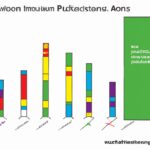The Atkinson Index is a useful tool in measuring income inequality within a population. It calculates the extent to which a society’s income distribution deviates from perfect equality. This index takes into account the relative income of the rich and poor, with higher values indicating greater inequality. Policymakers can use the Atkinson Index to assess the effectiveness of redistribution policies and make informed decisions. By analyzing this measure, they can identify areas of concern and develop strategies to address inequality and promote social justice. The Atkinson Index provides valuable insights into the distribution of income and helps policymakers create a fairer and more equitable society.
Table of Contents
- Calculation Methodology
- Calculation of Atkinson Index
- Definition of Atkinson Index
- Examples of Atkinson Index Application
- Interpretation of Atkinson Index
- Limitations and Criticisms of Atkinson Index
- Limitations of Atkinson Index
- Real-world Applications of Atkinson Index.
- Use of Atkinson Index in Income Inequality Analysis
(Atkinson Index)
The Atkinson Index, named after British economist Anthony Atkinson, is a measure used to analyze income inequality within a society. It provides insight into the distribution of wealth and the extent to which income is concentrated among a few individuals or evenly spread across the population.
One application of the Atkinson Index is in the field of public policy. Governments can use this measure to evaluate the effectiveness of their economic policies and determine whether they are reducing or exacerbating income inequality. By considering variations in income distribution, policymakers can identify areas where intervention is necessary, such as implementing progressive taxation or income redistribution programs.
Another application is in business. Companies can use the Atkinson Index to assess consumer preferences and purchasing power. By understanding income inequality, businesses can tailor their products and marketing strategies to better suit different income groups. For example, luxury brands may focus on targeting the affluent, while value brands may cater to lower-income consumers.
The Atkinson Index is also useful in academic research. Economists and sociologists can utilize this measure to study the impact of income inequality on various social outcomes, such as health, education, and social mobility. By analyzing the Atkinson Index over time and across different countries, researchers can gain insights into the correlation between income inequality and societal well-being.
Overall, the Atkinson Index serves as a valuable tool in understanding income inequality and its implications. With its various applications in public policy, business, and academic research, this index contributes to creating more equitable and inclusive societies. By utilizing this measure, policymakers, businesses, and researchers can work towards addressing income disparities and promoting a fairer distribution of wealth.
Calculation Methodology
The calculation methodology used to determine the Atkinson Index is a critical component in understanding its applications. The index is a measure of income inequality and is often used in economic analysis to assess the distribution of wealth within a society.
The first step in calculating the Atkinson Index is to establish a measure of welfare. This is typically done by using the concept of equivalent income, which takes into account the preferences and needs of individuals. By assigning different weights to different income levels, the index captures the relative importance of each individual’s well-being.
Next, the Atkinson Index incorporates a parameter called “inequality aversion.” This parameter measures how much society values reducing income inequality. A higher value indicates a higher aversion to inequality and a greater emphasis on redistributive policies. Conversely, a lower value suggests a higher tolerance for inequality.
Once the welfare measure and inequality aversion parameter are determined, the Atkinson Index is calculated using a formula that considers the income distribution across individuals. This formula combines the differences in equivalent incomes with the inequality aversion parameter to arrive at a single value that represents the level of inequality in a society.
One significant advantage of the Atkinson Index is its sensitivity to changes in the income distribution. By incorporating the inequality aversion parameter, the index can capture the impact of redistributive policies and changes in economic conditions on income inequality. This makes it a valuable tool for policymakers and researchers seeking to assess the effectiveness of various interventions.
The Atkinson Index also allows for comparisons between different countries or regions with varying income distributions. By using the same calculation methodology, analysts can evaluate and compare income inequality across different social contexts.
In conclusion, the calculation methodology used in the Atkinson Index provides a comprehensive and robust approach to measuring income inequality. By incorporating the concepts of welfare and inequality aversion, the index captures the relative well-being of individuals and societal preferences for redistribution. This methodology allows for the assessment of income inequality over time and across different geographical areas, providing valuable insights for policymakers and researchers.
Calculation of Atkinson Index
The Atkinson Index is a commonly used measure to assess income inequality within a population. It provides an understanding of how income is distributed among individuals or households, with a focus on capturing the level of disparity among them. The calculation of the Atkinson Index involves a set of mathematical formulas, which are relatively straightforward once the necessary data is available.
To calculate the Atkinson Index, one needs to first determine the average level of income within the population. This is done by summing up the total incomes and dividing it by the total number of individuals or households. Let’s say we have a population of 100 individuals, each with a different income level.
Next, we need to calculate the social welfare function parameter, denoted by epsilon (ε). This parameter is used to reflect society’s level of inequality aversion. A higher value of epsilon indicates a higher aversion to inequality, while a lower value indicates a greater tolerance for it.
Once we have the average income and the value of epsilon, we can proceed to calculate the Atkinson Index. The formula for the Atkinson Index is as follows:
A = 1 – (1/n) * ∑ ((y_i / y_avg)^(1 – ε))
In this formula, y_i represents the income of each individual, y_avg is the average income, and n is the total number of individuals in the population. The symbol ∑ represents the sum of all the values obtained by substituting the income of each individual into the formula.
By calculating the Atkinson Index, we can obtain a numerical value that ranges between zero and one. A value of zero suggests perfect equality, indicating that income is evenly distributed among all individuals or households. On the other hand, a value of one signifies extreme inequality, where one individual or a small group enjoys a disproportionately large share of the total income.
The Atkinson Index can be a useful tool for policymakers, researchers, and organizations to gauge the level of income inequality. It provides them with valuable insights into the distribution of wealth within a population, allowing them to design targeted interventions and policies to address any existing disparities. By understanding the Atkinson Index and its calculation, we can work towards creating a more equitable society for all.
Definition of Atkinson Index
The Atkinson Index is a widely used measure in economics to assess income inequality within a society. It provides a numerical value between 0 and 1, with higher values indicating higher levels of inequality.
This index is named after British economist Anthony Atkinson, who developed it in 1970. The Atkinson Index takes into account both the absolute level of inequality and the society’s aversion to inequality. It is often used as an alternative to the more commonly known Gini coefficient.
The calculation of the Atkinson Index relies on the distribution of income within a population. It considers the percentage of total income held by various income groups, giving more weight to the lower-income groups. The index uses a parameter called the “inequality aversion parameter” to reflect the society’s preferences regarding income distribution.
When the aversion parameter is set to zero, the Atkinson Index becomes equivalent to the Gini coefficient. However, by adjusting the aversion parameter, the Atkinson Index allows for a more nuanced analysis of inequality. A higher aversion parameter implies that society is more concerned with reducing inequality, leading to a larger reduction in the overall index value.
The Atkinson Index has found various applications in economic research and policy-making. For example, it can be used to compare income inequality across different countries or to track changes in inequality over time within a particular country. It also helps policymakers evaluate the impact of various policy interventions aimed at reducing income inequality.
Moreover, the Atkinson Index provides insights into the distributional effects of economic growth. By distinguishing between the absolute and relative income levels of different groups, it helps policymakers target their efforts to ensure that the benefits of economic growth are shared more equitably among all segments of society.
In summary, the Atkinson Index is a powerful tool for assessing income inequality. Its ability to capture both the absolute and relative aspects of inequality, combined with its flexibility to reflect society’s preferences, makes it a valuable measure in understanding and addressing economic disparities.
Examples of Atkinson Index Application
Examples of Atkinson Index Application
One example of the application of the Atkinson Index is in income inequality analysis. The Atkinson Index is a measure of income inequality that takes into account not only the gap between the rich and the poor but also the aversion of society to inequality. By using this index, policymakers and economists can better understand the level of income inequality in a given society and develop policies to address it.
Another example of the Atkinson Index application is in welfare analysis. The Atkinson Index can be used to measure the change in welfare resulting from a policy change or economic intervention. It allows policymakers to evaluate the impact of their decisions on the well-being of the population and make informed choices that improve overall welfare.
The Atkinson Index is also useful in assessing the effectiveness of social protection programs. By comparing the Gini coefficient, which only considers the average income gap, with the Atkinson Index, which captures the society’s aversion to inequality, policymakers can determine if their programs are truly reducing poverty or simply redistributing income without addressing the root causes of inequality.
In addition, the Atkinson Index can be applied to analyze income distribution in specific sectors or demographic groups. For example, it can be used to measure income inequality among different professions or among different age groups. This information can be valuable in identifying areas where targeted interventions are needed to address inequality and ensure a more equitable distribution of income.
The Atkinson Index can also be used in international comparisons of income inequality. By applying the index to data from different countries, policymakers and researchers can gain insights into the differences in income distribution and identify best practices for reducing inequality.
Overall, the Atkinson Index is a valuable tool in understanding and addressing income inequality. Its application in income inequality analysis, welfare analysis, social protection evaluation, sectoral and demographic analysis, and international comparisons provides policymakers with the information they need to develop effective policies and promote a more equitable society. By incorporating the Atkinson Index into their decision-making processes, policymakers can work towards creating a fairer and more just society for all.
Interpretation of Atkinson Index
The Atkinson Index is an important tool used in economics to measure income inequality within a society. The interpretation of this index provides valuable insights into the distribution of income and the level of inequality present in a given population.
The Atkinson Index calculates the extent of income inequality by comparing the actual distribution of income with an “equality” distribution, where everyone has an equal share. The index takes into account the proportion of income received by different individuals or groups, giving more weight to those with lower incomes. This weighting reflects the fact that income has diminishing marginal utility, meaning that additional income is valued less by individuals who already have a higher income.
A high Atkinson Index indicates a greater level of income inequality, while a low index suggests a more equal distribution of income. It is important to note that the choice of parameters in the index can influence the interpretation of the results. Different assumptions about individuals’ risk aversion levels or differing weightings for different income groups can lead to varying interpretations of the index.
The Atkinson Index has several limitations that need to be considered in its interpretation. Firstly, it focuses solely on income distribution and does not take into account factors such as wealth distribution or access to resources and opportunities. Secondly, it relies on income data which can be difficult to obtain and may not capture the full extent of individuals’ economic well-being. Finally, the index is sensitive to changes in the income distribution at the extremes, but less sensitive to changes in the middle-income range.
Despite these limitations, the Atkinson Index provides a valuable measure of income inequality that can be used to inform policy decisions and evaluate the effectiveness of redistributive measures. By understanding the level and nature of income inequality, policymakers can design interventions and social policies that aim to reduce inequality and promote social justice.
In conclusion, the interpretation of the Atkinson Index is crucial in assessing income inequality within a society. It allows us to understand the distribution of income and provides insights into the level of inequality present. While the index has limitations, it remains a valuable tool for policymakers to address income inequality and promote a more equitable society.
Limitations and Criticisms of Atkinson Index
The Atkinson Index is a widely used measure of income inequality. However, it is not without its limitations and criticisms. One major limitation is its sensitivity to changes in the distribution of income among the poorest individuals in a society. The index assigns a higher weight to the income of individuals with lower incomes, which means that any changes in the income of those at the bottom of the distribution have a disproportionate impact on the overall index value.
Critics argue that this sensitivity to changes among the poorest individuals can lead to misleading interpretations of income inequality. For example, if the income of the poorest individuals increases slightly while the incomes of the rest of the population remain stagnant or even decrease, the Atkinson Index may show a decrease in income inequality. However, this decrease does not reflect a significant improvement in the overall distribution of income.
Another limitation of the Atkinson Index is its reliance on individual income data. This means that the index does not take into account other factors that can contribute to inequality, such as wealth disparities or differences in access to education and healthcare. This narrow focus on individual income alone can result in an incomplete picture of overall inequality in a society.
Furthermore, the Atkinson Index assumes that all individuals within a society have the same preferences and utility functions. This assumption overlooks the fact that individuals have different needs and aspirations, which can affect their perception of inequality. For example, one individual may consider a certain level of income inequality to be fair and justified, while another may see it as unjust and unacceptable. The Atkinson Index does not account for these subjective differences in perception.
Critics also argue that the Atkinson Index fails to capture the multidimensional nature of inequality. Income is just one aspect of inequality, and other dimensions such as gender, race, and social class can also contribute to disparities in well-being. Ignoring these dimensions can lead to an incomplete understanding of inequality and hinder efforts to address its root causes.
Despite these limitations and criticisms, the Atkinson Index remains a valuable tool for measuring income inequality. However, policymakers and researchers should be cautious in interpreting its results and consider other indicators and dimensions of inequality to gain a more comprehensive understanding of societal disparities. By taking into account its limitations and supplementing it with other measures, the Atkinson Index can continue to contribute to our understanding of income inequality and inform policies aimed at reducing it.
Limitations of Atkinson Index
The limitations of the Atkinson Index must be acknowledged when evaluating its applications. One limitation is its reliance on income distribution data, which can be challenging to obtain accurately. Additionally, the Atkinson Index does not provide any information about the absolute levels of inequality, focusing solely on the redistribution of income.
Another limitation is that the Atkinson Index is based on the assumption that individuals care only about their own well-being and not about the well-being of others in society. This assumption may not hold true in reality, as people often care about the overall fairness and justice of income distribution.
Furthermore, the Atkinson Index assumes that individuals’ preferences for redistribution can be measured accurately. However, preferences for redistribution can vary significantly across individuals and societies, making it difficult to capture this complexity in a single index.
The Atkinson Index also does not consider other non-income dimensions of inequality, such as wealth or access to resources. This limitation means that the index may not fully reflect the overall inequality in society.
Moreover, the Atkinson Index does not account for the dynamics of income inequality over time. It provides a snapshot of inequality at a specific point in time but does not capture changes in inequality over different periods.
Lastly, the Atkinson Index assumes that the monetary value of income represents individuals’ well-being accurately. However, income may not fully capture the quality of life or well-being experienced by individuals. It does not consider factors such as health, education, or social capital, which are important determinants of individuals’ overall well-being.
In conclusion, the Atkinson Index has several limitations that need to be considered when using it to evaluate income distribution. These limitations include its reliance on income data, assumption of individual preferences, exclusion of non-income dimensions, limited scope over time, and focus solely on monetary values. While the index provides valuable insights into income redistribution, it is crucial to supplement its findings with other measures and consider its limitations when interpreting the results.
Real-world Applications of Atkinson Index.
The Atkinson Index is a measure of income inequality that has been widely used in economic research. It provides a way to quantify the disparity between the rich and the poor in a given population. While it is primarily used by economists, the Atkinson Index has real-world applications that extend beyond the realm of academia.
One of the most significant applications of the Atkinson Index is in social policy. Governments can use this measure to assess the impact of their policies on income distribution. By calculating the index before and after implementing a particular policy, policymakers can gauge its effectiveness in reducing inequality. This information is invaluable for making informed decisions that aim to create a more equitable society.
Businesses can also benefit from using the Atkinson Index to evaluate their corporate social responsibility efforts. By calculating the index for their employees, companies can identify any income disparities and take measures to address them. This not only helps promote fairness within the organization but also enhances its public image as a socially responsible entity.
The Atkinson Index is also used in international development work. Organizations that strive to reduce poverty and improve living conditions in developing countries can utilize this measure to assess the distribution of wealth among different segments of the population. By identifying areas of high inequality, policymakers and aid workers can direct resources and interventions to those who are most in need.
In addition to its applications in social and economic spheres, the Atkinson Index is also useful in academic research. It allows researchers to compare income inequality across different countries and time periods, providing valuable insights into the factors that contribute to inequality. By analyzing trends in the Atkinson Index, economists can gain a deeper understanding of the dynamics of income distribution and propose evidence-based policy solutions.
In conclusion, the Atkinson Index is a versatile tool with various real-world applications. From guiding social policy decisions to promoting corporate social responsibility, this measure of income inequality provides valuable insights into the distribution of wealth. Its widespread use in academia and international development work further demonstrates its significance in addressing issues of inequality and promoting a more equitable society.
Use of Atkinson Index in Income Inequality Analysis
The Atkinson Index is a widely used tool for analyzing income inequality. It measures the extent of inequality in a society by taking into account the distribution of income among its members. This index was developed by Anthony Barnes Atkinson, an influential economist who made significant contributions to the field of inequality measurement.
One of the key advantages of the Atkinson Index is its sensitivity to the distribution of income at the lower end of the spectrum. Unlike other inequality measures, such as the Gini coefficient, the Atkinson Index gives more weight to the income of those at the bottom of the distribution. This is important because it recognizes the significance of poverty and the need to address it in any efforts to reduce inequality.
The Atkinson Index also allows for the incorporation of ethical considerations into the analysis. By incorporating a parameter called the “inequality aversion parameter,” the index allows researchers to capture society’s preferences for reducing inequality. This parameter reflects the extent to which society considers inequality to be morally objectionable. By incorporating ethical considerations, the Atkinson Index provides a more comprehensive picture of income inequality.
Another advantage of the Atkinson Index is its simplicity. It is relatively easy to calculate and interpret, making it accessible to researchers, policymakers, and the general public. This simplicity also makes it a useful tool for comparing income inequality across different countries or time periods.
However, the Atkinson Index has its limitations. Like any measurement tool, it relies on assumptions that may not hold true in all circumstances. For example, it assumes that individuals are risk-averse when it comes to income distribution. This assumption may not be accurate for everyone, particularly those who are more willing to take risks or who have different preferences for income distribution.
In conclusion, the Atkinson Index is a valuable tool for analyzing income inequality. Its sensitivity to the lower end of the income distribution, incorporation of ethical considerations, and simplicity make it a powerful tool for researchers and policymakers. However, it is important to recognize its limitations and consider other complementary measures when analyzing income inequality. By using the Atkinson Index alongside other indicators, we can gain a more nuanced understanding of the distribution of income in a society and work towards more equitable outcomes.













